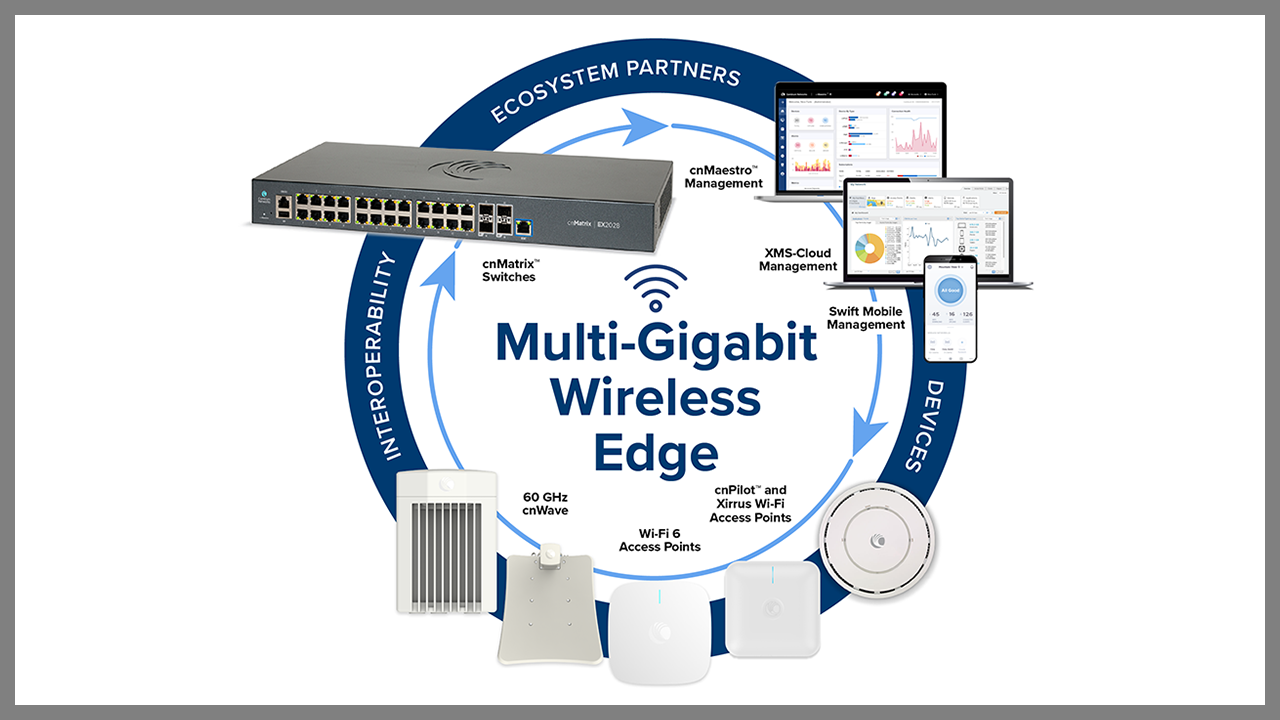
Connectivity Key to Digital Transformation
Written by Jonathan Shawhart, North America Industrial Connectivity Program Manager, Cambium Networks
Cambium Networks
The rail industry has long been aware of the critical need to modernize the nation’s infrastructure. The recent derailment of the Norfolk Southern train in eastern Ohio and subsequent fire and chemical spill demonstrated the severity of the consequences. According to The Wall Street Journal, derailments rank as the most common type of accident involving major freight railroads, with more than 1,000 occurring every year.*
Technological progress can solve many problems, and work is already under way to modernize one of our nation’s most critical transportation modes. But to reap the full potential of digital technology, this modernization must be accelerated. The rail industry needs to do more with data—and lots of it—along with deploying a robust and reliable communications infrastructure that will enable transportation professionals to make the right decisions based on the latest information from trains and rail yards.
Wireless connectivity needs to become a key pillar of the transformation plans for our nation’s railways. Indeed, the industry is rapidly integrating advanced technologies such as fixed wireless broadband to improve communication among trains, wayside stations, base stations, ground stations and control centers. Here are some of the ways this technology is already being used in the rail transportation industry, and what it means for its future.
Reliable Connectivity to Capture Critical Information
Fixed wireless technology provides reliable and gigabit-speed data transfer, allowing devices or networks to connect to the internet or other networks using radio waves instead of physical cables or wires. This type of connection is particularly useful in rural areas where traditional wired connections, such as fiber or cable, are not available or are too expensive to install due to the distance or terrain involved.
Fixed wireless technology provides voice and data communication between trains and control centers. This allows for real-time communication between operators and dispatchers, enabling better coordination and safer operations. When it comes to train-to-train communications, fixed wireless technology enables direct communication between trains, allowing them to exchange information about speed, location and track conditions. This information is critical for ensuring safe and efficient train operations, particularly in busy rail corridors.
For example, all Class I railroads have deployed automated technology to conduct more frequent safety inspections that detect more flaws. They can also respond to signs of trouble more quickly without exposing employees to physical danger. In addition, all trains today have a low frequency radio that transmits and receives data. For obvious reasons, this system must be highly reliable. If the connectivity between those radios and the towers is prone to suffering downtime or outages, operations are at risk.
Video Oversight of Yard Conditions
Fixed wireless technology is also being used to transmit live video feeds from cameras mounted on trains, tracks, and stations to rail control centers. This enables real-time monitoring of rail infrastructure, allowing operators to quickly detect and respond to incidents.
You might have 10 or 20 trains arriving at the same yard, dropping off and reloading products (intermodal or transloading) or breaking up and making up new trains (classification yards). At the same time, multiple trucks can be picking up and unloading freight, further contributing to what can already be a busy and noisy environment. Video is vitally important in helping enforce order on this seeming chaos.
Wireless technology can also support high resolution video cameras to monitor perimeter security at railroad yards. At the same time, a robust wireless infrastructure can support advanced applications on cameras that monitor whether any equipment needs servicing or replacement.
Reliable connectivity is also a must-have for safety purposes. Live video can help keep better track of the operation of large cranes that are used to move freight between trucks and trains. These systems provide close camera surveillance at all angles of the site—which eats up a prodigious amount of bandwidth and video, as managers view rail yard activity in real time.
Automation
By automating certain aspects of the transportation process, we can increase the total amount of freight trains are able to move. At a minimum, automation will improve operational efficiencies from current levels.
Driven by data, rail transportation systems will know where all trains in the network are located at any point and time. They’ll also be able to compute the distance required between individual trains so they can operate with reduced risk of collision. But again, these ambitious plans will hinge on being able to transmit and then parse huge amounts of information across vast rail networks. This means upgrading rail communications infrastructures with a systems that can support more bandwidth to overcome the current challenges posed by distance and obstacles.
The Future is Now
For railroads to minimize the impact of human error and make their operations safer and more efficient, there is no alternative to embracing a data-led future that rests on a dependable communication infrastructure. Even if the accident in East Palestine, Ohio never took place, automation was still bound to sweep through the industry. But now the timetable has sped up. It is our responsibility to move forward and ensure that the rail industry does not fall behind.
*Editor’s Note: The vast majority of derailments occur at low speed in yards and are minor, compared to a main line derailment at track speed. — William C. Vantuono



